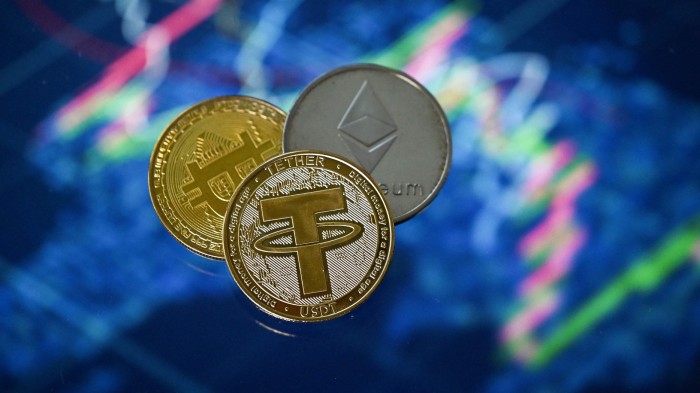Unlock the Editor’s Digest for free
Roula Khalaf, Editor of the FT, selects her favourite stories in this weekly newsletter.
The writer is chair of Société Générale and a former member of the executive board of the European Central Bank
Stablecoins are fast emerging as a disruptive force in global finance — and central banks are rightly paying attention. The Bank for International Settlements recently warned that a loss of confidence in stablecoin issuers could lead different coins to diverge from trading at par. This would threaten monetary stability, particularly if the issuers’ reserves lose value or are insufficiently liquid to meet redemption demands.
Banning stablecoins would seem like the obvious solution, but would probably be misguided. In fact, it is neither feasible nor desirable.
Instead, stablecoins should be understood for what they are: a technological breakthrough with profound implications for the financial system. They allow for near-instant, low-cost, peer-to-peer transactions across borders, all within a decentralised infrastructure. At scale, they can support the financing of public debt, since issuers are required to back them with government bonds. More broadly, tokenisation — the technology that underpins stablecoins — offers the potential to modernise capital markets and increase efficiency across the financial sector.
This is not lost on the US. Washington has begun to put regulatory guardrails in place — such as the Genius Act — to govern the issuance of stablecoins. The result has been a boom in private-sector innovation, drawing in major banks and financial institutions.
Europe, to its credit, has also taken steps. The EU’s Markets in Crypto-Assets (MiCA) regulation is one of the most comprehensive crypto frameworks globally, which actually addressed some of the concerns of central banks. It requires stablecoin issuers to hold high-quality, liquid reserves — 30 per cent in cash, the remainder in highly rated sovereign bonds — and builds in safeguards to manage liquidity risks. The EU’s pilot regime for distributed ledger technology lays the foundation for a more robust market infrastructure.
And yet, Europe remains far behind. Nearly 99 per cent of stablecoins are issued in the US and denominated in dollars. The euro barely registers in this new digital financial ecosystem.
The reasons for this are not primarily regulatory but cultural. They reflect a deep-rooted risk aversion and fear of the unknown that continues to stifle innovation. Many European banks see stablecoins as a threat to their profitable activities, particularly in payments and transactions. The investments required to adapt — both technological and human — are considerable, and first movers fear being left to bear the risk alone.
This is a classic case of co-ordination failure. Left unaddressed, it will delay progress and leave Europe on the sidelines. Leadership is needed — above all from public authorities. Yet European monetary authorities remain hesitant, often due to fundamental misunderstandings.
First, there is a huge underestimation of the strategic advantages that tokenisation can offer to the integration of the European capital market and the development of a euro safe asset. This is evident from the belief that a retail central bank digital currency, built on traditional infrastructure, could compete effectively with stablecoins.
Second, there appears to be a misguided belief that European entities can be insulated from global stablecoin use — a notion that does not hold in an interconnected financial system.
Recommended
Third, and most important, authorities do not seem to understand that failure to be proactive ultimately puts European monetary sovereignty at risk. Indeed, unless euro stablecoins are issued and widely used in Europe, euro-area deposits will migrate to foreign platforms, disintermediating European payment systems. Control over monetary and financial flows would erode — with long-term consequences for financial stability and policy effectiveness.
Ironically, Europe may be better positioned than the US to respond. While Washington has sidelined the Federal Reserve in shaping the stablecoin regulatory framework, in the EU, the central bank still has the institutional capacity to play a leading role. This is not only in regulating stablecoin issuance — especially by institutions such as banks — but also in mitigating systemic risks and coordinating innovation.
Europe has long struggled with a reputation for over-regulation and technological inertia. This is an opportunity to chart a different course. The tools are there. What’s needed now is leadership. Failing that, Europe will not just be following the pace set by others — it will be accepting its marginalisation in the future of global finance.


